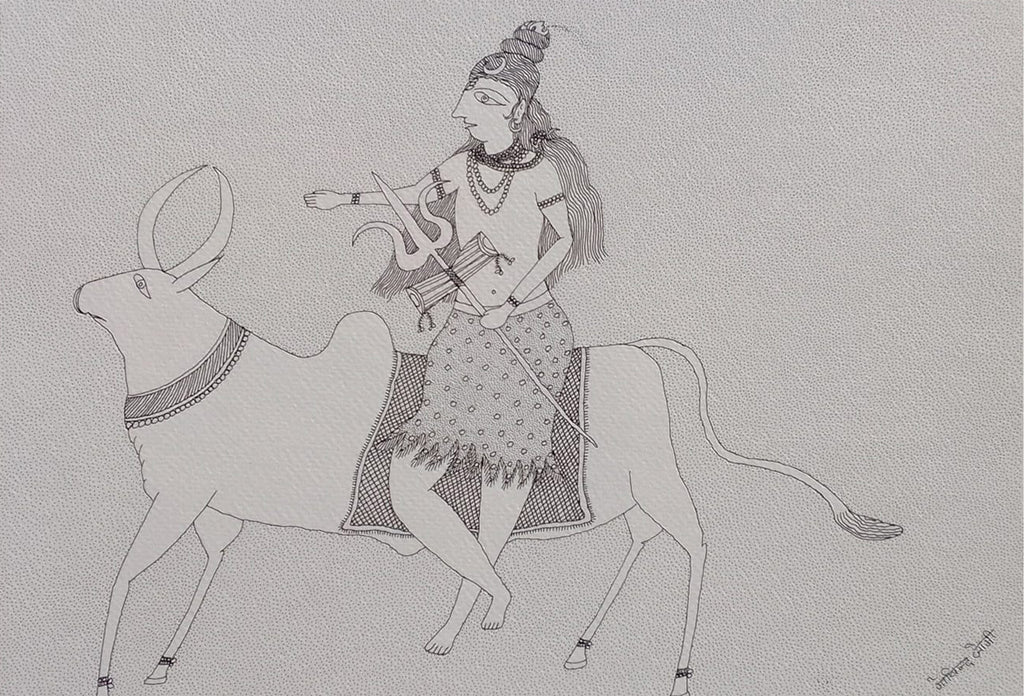About Jogi Art
Jogi Art is a distinctive Indian folk art form that emerged from the creative expressions of Ganesh Jogi and his wife, Teju Jogi, nomadic bards from Chittorgarh, Rajasthan. This art form transforms traditional folk songs into intricate visual narratives, bridging oral and visual storytelling. With its roots in Rajasthan’s cultural heritage, Jogi Art reflects the everyday lives, beliefs, and stories of its creators, offering a glimpse into their nomadic lifestyle and the broader folk traditions of India.
Jogi Art is characterized by intricate, black-and-white pen-and-ink drawings that emphasize detailed line work and patterns. The style often features densely packed compositions filled with fantastical creatures, mythical narratives, rural landscapes, and depictions of daily life. Themes are deeply rooted in the artists’ folk songs and oral traditions, including tales of gods and goddesses, village scenes, animals, and personal experiences. Despite its monochromatic palette, the art form conveys a vibrant energy and depth through its intricate detailing and storytelling.
History
The origins of Jogi Art trace back to the 1970s when renowned artist and cultural anthropologist Haku Shah encountered Ganesh and Teju Jogi. Recognizing the depth of their folk songs, Shah encouraged the couple to depict their stories visually. Using paper and pen, they began illustrating their songs, creating an art form that combined their musical heritage with detailed, imaginative drawings. This innovation not only preserved their oral traditions but also provided them with a sustainable livelihood as artists. Over time, Jogi Art gained recognition for its uniqueness and authenticity, becoming a celebrated folk art tradition.
Materials and Methods
Traditionally, Jogi Art employs simple materials—primarily pen and ink on paper. The lack of color draws attention to the precision and complexity of the lines, patterns, and textures. Artists often begin by sketching their ideas, using repetitive motifs and fine detailing to build layered narratives. This minimalist approach, combined with the richness of their themes, underscores the innovative adaptability of the artists who started with very limited resources.
Significance
Jogi Art is significant for its role in preserving the cultural identity and oral traditions of the Jogi community. By translating songs and stories into visual art, it offers a new medium to perpetuate their heritage while enabling economic self-reliance for the artists. It also highlights the resilience and adaptability of nomadic communities, showcasing their ability to innovate within traditional frameworks. Today, Jogi Art is celebrated for its cultural depth, intricate artistry, and contribution to India’s rich tapestry of folk traditions, embodying the enduring connection between art, music, and storytelling.
Highlights of Jogi Art Artform
| Artform | Jogi Art |
|---|---|
| Origin | |
| Materials Used | |
| Colours Used | |
| Popular Themes | |
| Price Range | |
| Artists | |
| Making Process | Handmade |





